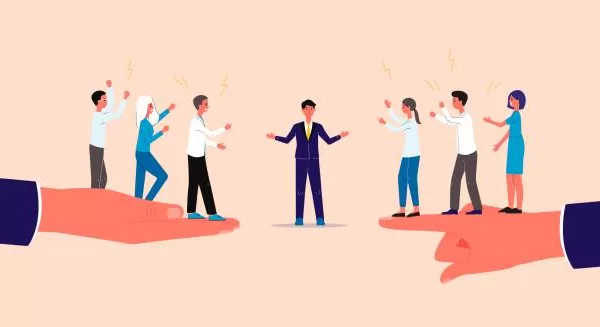Overview
A group of people with specific knowledge and complementary abilities who are goal-focused, cooperate, innovate, and regularly create superior results is referred to as a “high-performance work team.” Through shared objectives, shared leadership, teamwork, open communication, defined role expectations and group operating guidelines, early conflict resolution, and a strong feeling of accountability and trust among its members, the group constantly pursues performance excellence.
This blog will look into:
- Essential elements for a high-performing work team
- Common phases of team growth
- Causes of dysfunction on a team
- Primary team types that businesses set up to accomplish particular job objectives
The blog also offers ideas for how HR may support teams in achieving high performance. These include selecting the best team members, providing appropriate training, resolving disputes, conducting assessments and outcomes facilitation, and providing compensation and incentives. The article doesn’t address topics like employee involvement and staffing, which are dealt with in the Staffing Management Discipline, or retention-related problems, which are dealt with in the Employee Relations Discipline.
Background
The foundation of modern work life are work teams. Corporations are run by executive teams. New goods and services are produced by project teams. The development of everything from drugs to the provision of services in consulting businesses and nonprofit organizations is assisted by matrix teams. Teams in sales and marketing provide clients with goods and services. The majority of firms must structure and conduct their work using high-performance work teams in order to achieve superior performance, which results in a sizable competitive advantage.
A team is any collection of individuals that cooperate to pursue goals that go beyond their own self-interests; however, not all organizations are teams. The Wisdom of Teams: Creating the High-Performance Organization by Jon R. Katzenbach and Douglas K. Smith provides a brief but clear definition of what “a team” is. A team is defined as “a small group of individuals with complementary abilities who are devoted to a single purpose, performance goals, and methodology, and for which they hold each other accountable.” 1
High-performance teams differ from other groups in that they are made up of individuals who go above and beyond the call of duty.
In order to work well, a high-performance team also requires:
- A strong feeling of mission and dedication to the team’s members and the goal
- Comparatively loftier performance targets than normal teams
- Mutual accountability and an understanding of each member’s duties both to the team and personally
- A broad breadth of experience that enhances the skills of other team members
- Members’ interdependence and mutual trust
Work teams are frequently utilized in all different kinds of enterprises around the world, and for good reason. Because each team member can contribute unique skills, ideas, and perspectives, high-performance work teams are advantageous over individual projects. High-performance work teams are also empowered, accountable for their functional activity, and responsible for executing strategy, meeting targets, and requiring minimum managerial oversight. The achievement of team and individual goals is typically linked to compensation and incentives, with a stronger focus on collective team performance. These teams do not tolerate marginal and poor individual contributions since excellent team performance is so highly valued.
Enterprise Case
As a result of technology advancements and competitive obstacles, teamwork has drastically increased. Team structures enable the application of a variety of abilities, opinions, and experiences that are best suitable for projects requiring a variety of specializations and problem-solving abilities. Teams are more capable than individuals of carrying out tasks faster, making superior decisions, resolving complicated problems, and doing more to foster creativity and develop abilities. Additionally, using them boosts morale and productivity; effective teams can outperform individuals and even other kinds of working groups.
Teams succeed for the following four main reasons:
- A group of people can do more than one person can alone because of their complementary skills and expertise
- Teams are more adaptable and sensitive to shifting needs and promote real-time problem-solving
- Teams offer a special social component to work that improves the financial and administrative facets of it
- In general, high-performing teams and individuals like their jobs more than those who perform less well
High-Performance Work Teams’ Personalities
Although no team is the same and there is no easy way to gauge a group’s performance effectiveness, there seems to be a general consensus on what makes an effective group function. Norms and standards, power and empowerment, conflict, communication, efficacy, leadership, talent, skills, performance ethics, incentives, and motivation are all components of high-performing work teams in general.
TEAM PURPOSE, GOALS AND ROLES
High-performing groups collaborate to accomplish a shared objective or objectives, both short-term and long-term. They frequently serve as an example of entire dedication to the task and to one another. When responsibilities are defined, team members perform better because they understand how and why they are performing each task. The mission and vision of the team must be understood by each member and supported. The potential of the team is increased by making the objective clear and connecting it to each person’s position and duties, as well as by including “stretch” goals that raise the bar on the level of difficulty required to inspire team members.
TALENT, SKILLS AND WORK ETHIC
High-performance teams start by bringing on and keeping the best talent while helping underachievers find new jobs as soon as possible. Performance usually rises along with morale. After choosing team members based on talent, it is crucial to make sure they have complementary talents (e.g., technical, problem-solving, decision-making and interpersonal skills). Team members are expected to consistently commit to performing at the highest level, to be open and respectful with one another, and to hold themselves and their organizations accountable on both an individual and team level.
INCENTIVES, MOTIVATION AND EFFICACY
Systems that reward outstanding performance both financially and nonfinancially have a positive effect on the tactical realization of the team’s objectives. The greatest influence on performance is made over the long run by intrinsic motivators like job satisfaction and engaging initiatives. Additionally, having confidence in one’s abilities and self motivates one to take more calculated risks in order to accomplish team objectives.
LEADERSHIP
High-performing work teams typically have high-performing leaders. The ability to a) maintain the relevance and significance of the purpose, goals, and strategy; b) foster commitment and confidence; c) ensure that team members continually improve their skills; d) manage relationships from the outside with a focus on the removal of obstacles that might hinder group performance; e) provide opportunities for others without seeking credit; and f) get in the trenches and carry out the necessary work are all essential leadership qualities. There is broad consensus that great team leaders put a strong emphasis on connections, purpose, goals, and an unflinching dedication to outcomes that are advantageous to both the organization and each individual.
COMMUNICATION & CONFLICT
A high-performance team must have effective conflict management. In these teams, open communication implies putting more emphasis on coaching than on directing and emphasizing the capacity to face problems head-on in an honest and open manner. Open channels of communication are essential for team performance because they inspire cooperation, retain interest, and provide incentive.
EMPOWERMENT
Increased ownership, the chance to learn new skills, increased enthusiasm in the project, and easier decision-making are all benefits of empowered work teams. The perfect scenario, according to researchers, is described as being “loose-tight,” meaning that certain decision-making constraints are created with enough leeway for people to make informed decisions.
STANDARDS AND NORMS
Norms, like the guidelines that direct group behavior, can aid in enhancing the growth and effectiveness of a team. Open lines of communication, quick conflict resolution, regular evaluations of both individual and team performance, high levels of respect among team members, a supportive and cohesive team environment, a strong work ethic that prioritizes results, and shared appreciation of team accomplishments are all norms for high-performance teams. The crucial factor is that high-performing teams genuinely talk about and decide on their operating principles—standards that each team member commits to upholding and for which they hold one another accountable.
Team Development Stages
A pioneering psychologist who studied group dynamics, Dr. Bruce Tuckman created a four-phase model of team growth that comprised forming, storming, norming, and performing. A well-known team development approach that has been refined by various studies offers a helpful framework for leaders and team members looking to understand the nature of group dynamics and their evolution.
The four commonly understood steps of the procedure are as follows:
- Forming. People are getting to know one another and the company while still forming their commitments to the group. Project leaders give direction and lay out expectations in consultation with HR. In order to help the group comprehend the distinctions and functioning styles among one another, HR may also provide DISC or Myers-Briggs assessments.
- Storming. Members of the team may disagree with the leader and one another at this normally difficult stage. The team leader may ask the HR staff to assist with facilitating relevant training as they advise members on how to handle conflict and concentrate on goals.
- Norming. Conflicts among people are resolved, and then the team starts to grow. People start to cooperate and respect one another’s differences. The facilitator role is assumed by the leader, who also provides support and direction. HR provides ongoing support and, when necessary, can lead talks or provide training.
- Performing. At this point, the team is fully operational, and its members are able to control their interpersonal interactions and advance common objectives. Team members openly speak with the leader because they feel accepted. The team’s leader concentrates on assigning tasks and must recognize when the team is transitioning to a new stage.
While other scholars have described a related process, they have given the phases various names (e.g., working group, pseudo team, potential team, real team and ending with a high-performance team). No of the terminology employed, high-performance work teams evolve over time in much the same manner. As a result, this four-phase model works well for organizational objectives in general, while some academics have proposed that a fifth stage, adjourning or grieving, which describes the pain and loss experienced as a successful team separates, happens when the group is disbanding.
Typical Forms of High-Performance Teams
Organizations frequently create five sorts of teams to accomplish work goals, albeit they differ in duration, purpose, and ultimate aims.
STAFF TEAMS
Work teams are ongoing organizations in charge of creating things or rendering services. They typically have a stable, well-defined membership that is full-time in most cases. Work teams are common in both manufacturing and service environments, and they are typically led by supervisors who decide most of what gets done, how it gets done, and who gets to do it. Self-managing teams, in which employees take choices that once belonged to managers, are becoming more popular.
COMPARATIVE TEAMS
In parallel teams, individuals from various work units or positions come together to undertake tasks that the organization is ill-equipped to handle. With little power and the ability to do nothing but provide recommendations, they operate independently of the formal organizational structure. For problem-solving and improvement-focused tasks, parallel teams are employed (e.g., quality improvement teams, employee involvement groups, quality circles or task forces).
CONTRACT TEAMS
Project teams often work under time constraints and deliver a single deliverable (e.g., a new product or service, information system or plant). Project-team duties require extensive application of knowledge, judgment, and competence and are not repetitious. Since members typically come from a variety of disciplines and functional areas, the project might benefit from the application of specialized experience.
TEAM MANAGEMENT
Management teams are in charge of a business unit’s overall performance and coordinate and direct its components. The hierarchy in which its members are arranged gives the management team its power. The executive management team, located at the top of the organization, sets the company’s strategic direction, oversees its performance, and shares accountability for its overall success.
VAULT TEAMS
A virtual team is made up of people who collaborate on projects together across organizational, temporal, and spatial boundaries. Through electronic communication technologies, they are connected (e.g., the Internet, Skype, WebEx, internal networks). In order to complete certain organizational duties, members of a virtual team coordinate their work primarily through electronic information and communication technology; they may never actually meet in person. Without regard to geography, virtual teams enable businesses to hire the finest people for a given project. Additionally, they are typically thought to be more effective in terms of time usage and associated travel expenses. See How to Collaborate with International Teams and Building Stronger Virtual Connections.
Common Obstacles High-Performance Work Teams Face
Experts have concentrated on employing evidence-based organizational research to identify the distinguishing characteristics of high-performance teams because of the significance of team-based work in today’s economy.
Even though there are many different ways to define high-performance teams, some common traits appear to be reliable signs that a team is underperforming or requires assistance:
- leadership that doesn’t participate. Team members do not engage and involve team members through democratic leadership
- Making poor decisions. Without a mix of analytical and intuitiv methods, team members make judgments too quickly
- Sporadic communication Communication channels are closed and intermittent
- Diversity isn’t respected. Due to a lack of different opinions and unsuccessful decision-making and solutions, team members do not value the diversity of experience and backgrounds of their fellow team members
- Reciprocal lack of trust. Team members do not have complete faith in one another or the group as a whole
- Incapacity to control conflict Team morale can be ruined if dispute is not handled openly and honestly and grudges are allowed to fester
- Not having a clear goal. There is a lack of commitment and involvement among team members as a result of their uncertainty about their duties and the overall team goals
- Roles and obligations that are poorly defined. Team members lack clarity over what they must do (and must not do) to support the success of the team and show their dedication to the group
- Issues in relationships. Team members’ relationships are weak, which has an impact on their efficacy and efficiency
- Negative environment Failure to perform at high levels is caused by an overall team culture that is not open, transparent, positive, and future-focused#
Role of HR
The best way for HR to support managers as the main resource on any organizational team endeavor is to concentrate on a number of essential factors. 11 Strategies for Developing Stronger Teams.
CHOOSING THE RIGHT TEAM MEMBERS AND PROMOTING TEAM COHESIVENESS
Leveraging differences that reflect the variety of their workforce can strengthen organizations. Surveys have shown that teams with a diversity of ages, ethnicities, and gender perform better overall. The productivity and creativity of a business can both be enhanced by a diversified workforce. However, managing a diverse team can be difficult. Together, people from various backgrounds have the potential for great success as well as great strife. In order to manage diversity, an atmosphere must be created where different points of view can be respected and permitted to have a beneficial impact on and contribution to the organization’s work.
By assisting in the selection of the ideal group of people with the necessary knowledge, abilities, and skills to complement the knowledge, skills, and abilities of other team members, the HR team can support the creation of new teams.
COMMUNICATION
High-performing teams must have open communication, a consensus that no subject is off-limits, and regular, polite interactions between team members and other members of the organization. In order to keep team members in close contact with one another through open communication, the HR staff might collaborate with team members to offer communication skills training.
RESOLVING DISPUTES
The capacity to handle disagreement in a constructive manner is one of the key distinctions between an ordinary team and a high-performance work team. Any disagreements that arise need to be handled with quickly and depersonalized, either between individuals or the entire team. A high-performance team sees disagreement not as a weakness but as a strength of the group as a whole. Diverse perspectives enhance learning, thinking, and performance in general.
If handled cooperatively, task disagreements can actually boost team effectiveness. Such disagreement encourages a deeper comprehension of work challenges and an information exchange that helps with problem-solving, decision-making, and idea generation.
Since conflict is a result of differences, it is also a result of the power, values, and attitudes of the individuals that make up the team. The majority of conflict resolution techniques place a strong emphasis on the value of handling conflicts swiftly and openly in order to prevent the negative effects that might come from frequent disagreements. Conflict need not always be harmful; with the right management, it can really have a positive impact on the team. Viewpoint: The Art and Science of Conflict Management is a good resource.
Understanding individual working styles is crucial for supporting effectiveness within high-performance teams. HR can help with this by using the Herrmann Brain Dominance Instrument, the Myers-Briggs Type Indicator, and the DISC assessment (or other assessments for which they are qualified) so that each person has a better understanding of the actions, personalities, and thought processes of his or her fellow team members.
COLLABORATION
In order to contribute more successfully to the development of a new service or product than individual team members could, collaboration is the foundation for bringing together the knowledge, expertise, and abilities of many team members. It entails dedication to a common objective and an understanding of interdependence that results from the realization that what can be achieved collectively is greater than what can be achieved individually.
Understanding the procedures that lead to successful collaboration is a skill that must be developed. In order to achieve optimal performance, HR can assist in facilitating talks about constructive methods to work in a group context. Check out 6 Tips for Balancing Collaboration and Concentration in Remote Work and How to Collaborate with a Hybrid Workforce.
TRAINING FOR TEAM MEMBERS
HR must offer in-depth training on effective teams, the normal stages of team dynamics, role expectations, conflict resolution, communication, and related topics in order to maximize each employee’s individual contributions to a team. The team members’ understanding of potential difficulties and the best way to handle them can both be improved with this training.
HELPING BRAND-NEW AND TRAVELING TEAM MEMBERS
As new team members are chosen, HR can assist with their integration. This procedure is especially helpful if a team member arrives late, which might upset the dynamics of the group. The process of integrating new members will go more smoothly if you can help them comprehend the group norms and expectations.
Additionally, HR can assist in managing the exit of successful team members and the dissolution of a team. It’s crucial to handle departures delicately. The conclusion of each team member’s tenure should include recognition of their contributions and accomplishments.
Business Planning for HR
The way teams are deployed within an organization can be understood, communicated, and influenced by HR professionals in their capacity as business leaders.
SUGGESTING WHEN TO USE TEAMS TO MANAGEMENT
When it would be good to deploy teams, HR can assist the business. Teams can be useful when creating a product or service, planning rituals or ceremonies, improving a product or service, raising sales and marketing performance, and increasing profitability.
CONSULTING MANAGEMENT DURING TEAM STARTUP
When a team is originally constituted, as well as after the team’s objectives have been set, HR may assist management in structuring and locating the appropriate employees for membership based on personality profiles and expertise (knowledge, skills, and experience).
CREATING A TEAM PROJECT PLAN
An organizational or departmental strategic planning process serves as the foundation for business planning. It clarifies the more immediate steps required to accomplish objectives. A newly established team can work with HR to create a clear business or work plan that will help it concentrate on the right goals and objectives and consider the best ways to achieve those goals.
TEAM BUILDING AND ENERGY
An continuing activity called team building aids in the formation of a cohesive workgroup. The team members appreciate individual diversity and trust and support one another in addition to having similar expectations for completing work as a group. HR’s job as a team builder is to assist the group in becoming more unified and effective. Teams frequently lose their drive or focus in the middle of a project, therefore HR must encourage and assist team members. In order to help team members sharpen their concentration and refocus their efforts to effectively complete the project, HR can help design a team-building activity. Refer to Forming Team Bonds.
Technology
Since virtual teams rarely interact in person and frequently coordinate their work through electronic information and communication technologies, having the proper technology tools and support is crucial. While other teams rely on technology as well, none do so as much as virtual teams. See Are Too Many Apps Overwhelming Workers?
Metrics
Teams must have a clear idea of where they are going and how to discover the most effective path there. Most teams will need a measuring system that allows each member to know what is expected of them and gives them a tool to gauge their own development.
As a result, the following elements must be part of the measuring method used to assess relative team success:
- A list of the outcomes the team hopes to achieve, together with performance benchmarks for each outcome
- Results statements for each person that include performance metrics for each result
- An understanding of the value of team and individual results in relation to other priorities
- A strategy for gathering and analyzing performance data so that the team and individuals may assess their performance.
Global Concerns
Organizations compete in a more globally competitive environment, and high-performance work teams have individuals who live and work in several nations. Employers must consider this and choose the best techniques (such as communication, technology, remuneration, and recruiting) based on the regional culture, laws, and customs.




